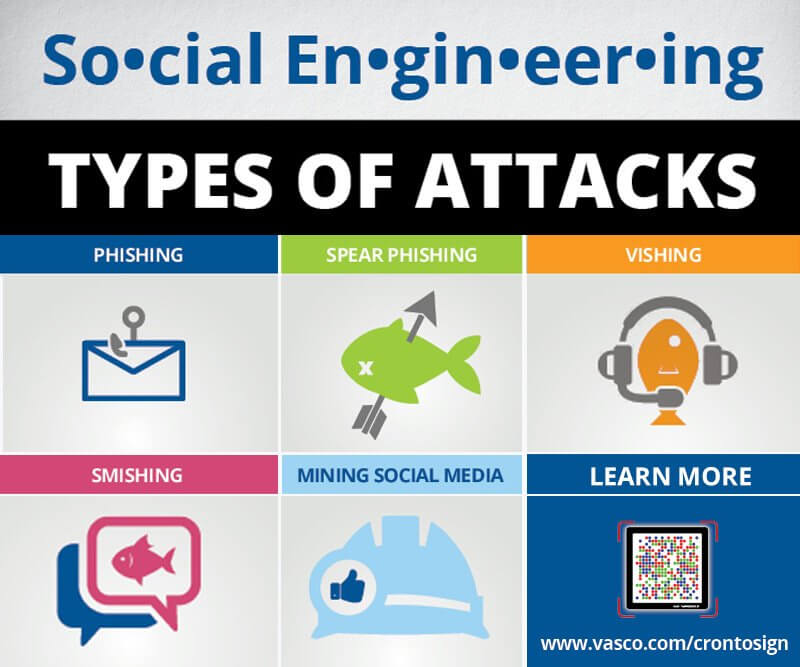Social engineering is one of the most powerful hacking techniques in the world. Hackers often start attacks using this method, even hacks of large-scale organizations. Many people don’t take social engineering seriously or understand it despite its prevalence. Below is our guide on social engineering and why you must understand it.
What is Social Engineering?
Social engineering is a broad term covering many techniques used to hack systems. In basic terms, social engineering uses tricks and psychological tactics to make someone do something to compromise their security.
Hackers use the technique to gain a foothold in a system before using malware or RATs (remote access tools) to steal data or control a system. Social engineering is an entry point, not a method of completing a hack.
Despite these drawbacks, hackers use this method more than any other hack because human beings are often the weak link.
Types of Social Engineering
Social engineering has many forms, so regular people can have difficulty spotting it. Below are just some of the types of engineering commonly used on the internet.
Phishing
Phishing is a type of engineering that relies on the victim’s lack of knowledge. Often phishing comes in emails or other messages, trying to entice users into clicking links, downloading files, or installing unsafe programs.
Hackers write emails pretending to be from a trusted source or try to play against their victim’s fears. Phishing messages can claim to be from work colleagues, companies you’re known to use and trust, or even government bodies. These messages often come with an attachment or disguise a link claiming to lead the victim to a trusted website. Once the victim takes the bait, the hacker installs malicious software on their system.
Phishing is the most common type of social engineering because it’s easy to pull off. Hackers can cast a wide net by sending mass emails using phishing techniques. If hackers target 1000 victims, even 1 percent of those victims falling for the trick gives the hacker ten targets. With modern email and messaging services, sending hundreds of thousands of messages in one go is possible.
Piggybacking
Piggybacking is a type of social engineering that requires physical contact with the target. Hackers can use piggybacking to gain access to physical systems in several ways. One method is to claim they have lost their login for a system and ‘borrow’ the victim’s ID. Another method hackers use to attack is to ask to borrow specific equipment like a laptop; then, they quickly and quietly install malicious software on the system.
Piggybacking is a much smaller threat than phishing emails because physical contact is required. Hackers mostly rely on piggybacking to target a specific system or company, but it can be used on the general public. Suppose a hacker sets up in a coffee shop where people often use laptops. In that case, they can ask various people throughout their stay to ‘borrow’ their laptop to check social media or their emails and install malware surreptitiously.
Baiting
Baiting is very similar to phishing, except that baiting offers the victim something they want rather than claiming to be a trusted source or playing on fear. This type of social engineering was one of the most common in the early days of the internet. Pop-ups claiming you’ve won a prize or emails offering money fall into this category.
Like all types of engineering, baiting relies on human physiology to work well. Hackers who use baiting will offer the trendiest items of the moment to entice a hapless victim, sometimes even children.
How to Spot Social Engineering

Now that you know how hackers use social engineering, you must learn how to spot and avoid them.
Regarding phishing attacks and similar engineering methods, your best method for spotting them is to read known phishing scams. Phishing is constantly evolving. Learning how hackers compose phishing emails is your best chance of not being a victim. We have a guide on spotting scam emails that you can use to educate yourself.
In terms of piggybacking, the main thing you need to do is be careful who you trust. If someone you don’t recognize asks for help entering your workplace, tell them you can’t help them. Don’t lend your laptop to strangers, no matter what they claim to need.
Nothing is ever free, especially on the internet. You should be immediately suspicious if you receive a message offering something for free.
Other Things You Can Do
Social engineering is a powerful tool, but it’s not the only one out there. Hackers use social engineering to gain a foothold in your system. It would be best to take other actions to protect yourself in a social engineering breach.
Keep your protective software up-to-date. Antivirus, Antimalware, and a decent firewall with up-to-date databases can save you even if a system user messes up.
Humans are the weak link in the security chain, so you should always plan around the possibility of human error. If you have a home network, ensure that someone knowledgeable has a hand in setting it up. Not using proper security on your wireless router can lead to data loss, especially with children and young people in the house.
Children are some of the most vulnerable when it comes to social engineering. Younger people are more likely to fall for phishing and baiting scams, so you ensure they know the dos and don’ts of using a computer and the internet. Our guide on safe online participation for children can help you figure out what to teach them.
Are you worried about hackers? Our comprehensive security audit can keep you safe.
Featured image by Midjourney and Jonas Borchgrevink.